Discover the Tranquility of Jietai Temple: A Hidden Gem in Beijing
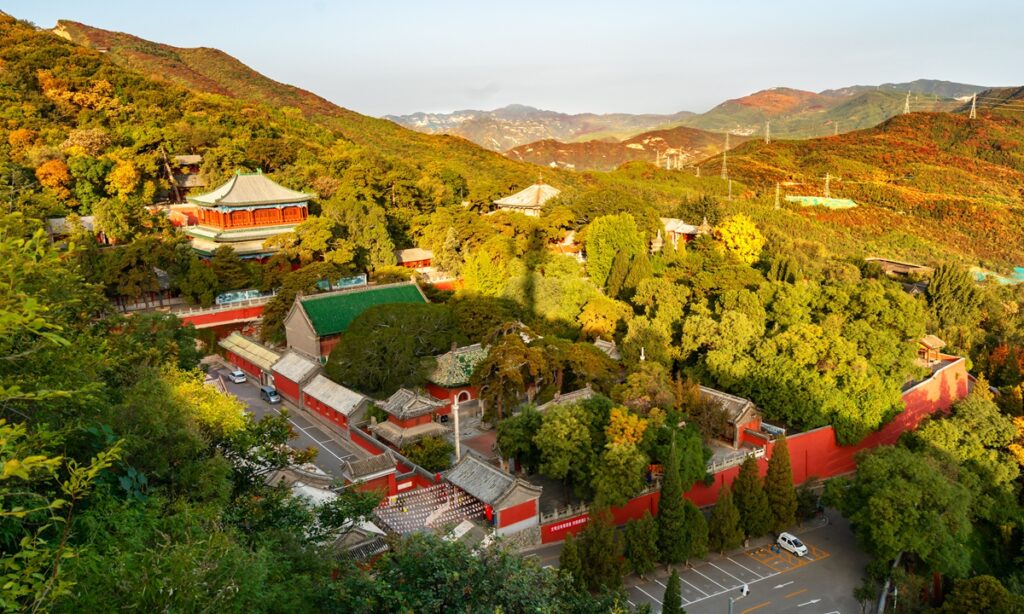
An Essential Guide to Visiting Jietai_Temple
Nestled within the serene embrace of Beijing’s Western Hills, Jietai Temple (戒台寺) stands as a testament to the rich tapestry of China’s Buddhist heritage. Unlike the bustling temples found in the heart of the city, this hidden gem offers visitors a rare glimpse into a world where spirituality flourishes alongside nature. As you wander through its ancient pathways, you’ll encounter stunning architecture, majestic old trees, and intricate statuary that evoke centuries of devotion and history.
Jietai Temple is not just a destination; it’s an experience that allows you to escape the frenetic pace of modern life and immerse yourself in tranquility. With fewer tourists than its more famous counterparts, you’ll find a peaceful sanctuary where the echoes of prayer and the rustle of leaves combine to create an atmosphere of calm. Whether you are an avid photographer seeking unique shots of the temple’s breathtaking features or a curious traveler looking to deepen your understanding of Buddhist practices, Jietai Temple promises a rewarding visit that resonates long after you leave.
Prepare your senses for a journey through time as you explore this remarkable site, where the past and present coexist harmoniously amidst Beijing’s natural beauty.
In This Guide
- An Essential Guide to Visiting Jietai_Temple
- The Rich History and Legends of Jietai_Temple
- Main Highlights: What You Absolutely Can’t Miss
- Planning Your Visit: A Practical Guide
- Tickets: Prices, Booking, and Tips
- How to Get There: A Complete Transportation Guide
- Local Cuisine and Accommodation Nearby
- Frequently Asked Questions
- Final Thoughts on Your Trip
The Rich History and Legends of Jietai_Temple
Nestled in the serene Western Hills of Beijing, Jietai Temple (戒台寺) stands as a testament to the enduring legacy of Buddhism in China. Founded during the Tang dynasty in 618 AD, this ancient temple has weathered the test of time, embodying centuries of spiritual devotion and architectural splendor.
Originally established as a place for monks to practice and study, Jietai Temple has been a significant pilgrimage site for Buddhists throughout history. Its name, which translates to “戒台” or “Platform of Precepts,” reflects its role in the Buddhist tradition as a space where practitioners could seek enlightenment and adhere to monastic regulations. Over the years, the temple has evolved, absorbing the influences of various dynasties, each leaving its mark on the structure and atmosphere.
Within the temple complex, visitors can admire a stunning array of buildings, each showcasing traditional Chinese architectural styles. Among these, the most striking feature is the white marble double dragon statue, a symbol of imperial power and protection, which stands guard at the entrance. As you wander through the temple grounds, you’ll encounter ancient trees, some of which grow directly from the walls, further enriching the temple’s mystical ambiance.
Despite its historical significance, Jietai Temple remains relatively undiscovered by the throngs of tourists that flock to more renowned sites in Beijing. Here, the air is imbued with a sense of tranquility, allowing visitors to engage with the spiritual practices that still occur today. It’s not uncommon to spot local worshippers quietly engaging in rituals, offering an authentic glimpse into the living heritage of Buddhism.
Throughout the years, the temple has also attracted numerous legends and stories, adding to its allure. One popular tale recounts that the temple was built on the site where a revered monk achieved enlightenment after years of meditation. This narrative has turned Jietai Temple into a beacon for those seeking spiritual growth and understanding.
Visiting Jietai Temple is not merely an excursion to an ancient site; it offers a unique opportunity to connect with the rich tapestry of Chinese history and spirituality. As you explore its peaceful grounds, take a moment to reflect on the millions who have sought solace and wisdom within these walls. Whether you are an avid historian, a spiritual seeker, or a curious traveler, Jietai Temple invites you to step back in time and experience the profound serenity that has attracted pilgrims for centuries.
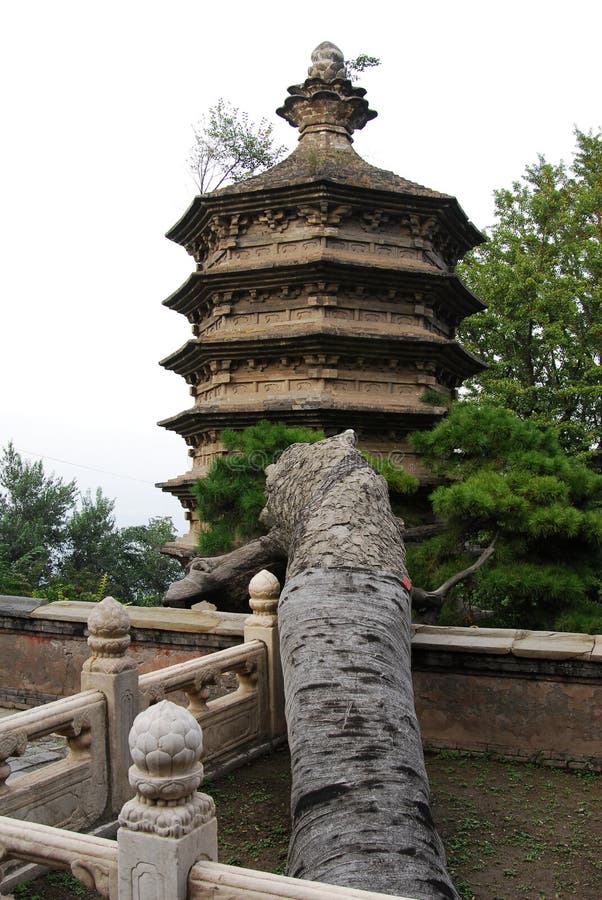
Jietai_Temple.
Main Highlights: What You Absolutely Can’t Miss
When visiting Jietai Temple (戒台寺) in Beijing, there are several captivating highlights that you simply cannot miss. Nestled in the serene Western Hills, this Buddhist temple offers a peaceful retreat from the bustling city and a glimpse into China’s rich spiritual heritage. Here’s what to look out for during your visit:
The Stunning Architecture
Jietai Temple is renowned for its beautifully preserved buildings that reflect traditional Chinese architectural styles. As you stroll through the temple grounds, take time to appreciate the intricate eaves, ornate carvings, and the harmonious layout that creates a tranquil atmosphere.
The White Marble Double Dragon Statues
One of the most striking features of the temple is the white marble double dragon statue. This exquisite piece of art symbolizes power and auspiciousness in Chinese culture. Make sure to capture a few photographs here, as the statues are not only impressive but also provide a perfect backdrop against the temple’s ancient structures.
Ancient Trees
A unique aspect of Jietai Temple is its ancient trees that have stood the test of time. Climbing the hills surrounding the temple, you will encounter gnarled trunks and expansive canopies, some of which grow directly from the temple walls. These trees are not just beautiful; they tell a story of resilience and history. A quiet moment spent among these giants can be quite meditative.
Serene Atmosphere
Unlike the more tourist-heavy sites in central Beijing, Jietai Temple offers a tranquil and reflective environment. You may encounter a few local worshippers, adding to the authenticity and spiritual ambiance of the place. If you visit in the fall, the colorful foliage enhances the serene experience, making it an ideal time for contemplation.
Vegetarian Restaurant
For those looking to experience a taste of Buddhist culture, the temple features an in-house vegetarian restaurant. While the dining experience is governed by strict etiquette—such as separate seating for males and females—it offers a unique opportunity to sample delicious vegetarian dishes inspired by traditional Buddhist cuisine.
A Unique Photo Opportunity
Bring your best camera to capture the enchanting surroundings of Jietai Temple. The harmonious blend of nature and architecture offers countless angles for stunning photographs. Whether it’s the intricate details of the temple structures or the serene natural landscape, you’ll find plenty of moments worth preserving.
Access to Nearby Attractions
Jietai Temple is conveniently located near other notable sites, such as the Tanzhe Temple and Beigong Forest Park. If time allows, consider exploring these nearby attractions to enrich your experience of the area.
Visiting Jietai Temple is not just about viewing another historic site; it’s about immersing yourself in the tranquility and spiritual essence of Buddhism in China. Whether you’re a history enthusiast, a photography lover, or simply seeking peace, Jietai Temple promises an unforgettable experience.
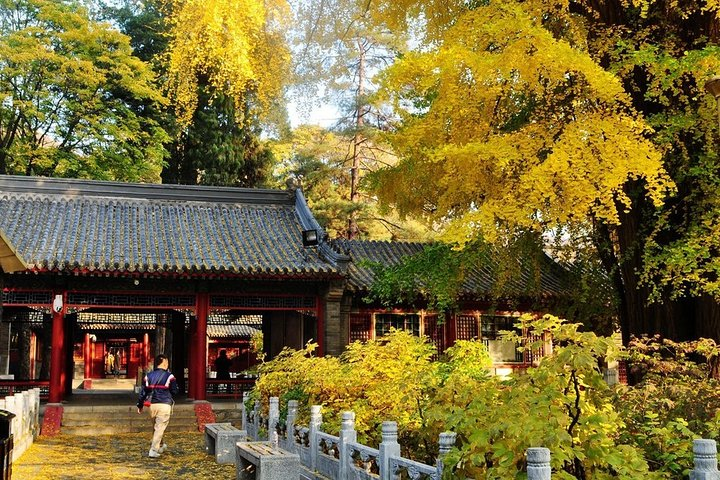
Jietai_Temple.
Planning Your Visit: A Practical Guide
Planning Your Visit: A Practical Guide to Jietai Temple
Nestled in the serene Western Hills of Beijing, Jietai Temple (戒台寺) is a hidden gem that offers a glimpse into China’s rich Buddhist heritage. This tranquil temple is a delightful escape from the bustling city life, making it a must-visit for international travelers seeking to immerse themselves in authentic cultural experiences.
Getting There
Location:
Jietai Temple is located in the Mentougou District of Beijing, approximately 50 kilometers from the city center.
Transportation Options:
– By Subway: Take Line 1 to the Pingguoyuan Station. From there, you can catch a local bus or taxi to the temple.
– By Bus: Several buses run from various parts of Beijing to Mentougou. Look for the 929 bus, which goes directly to the temple.
– By Taxi: Taxis are readily available, and the journey from central Beijing typically takes around 1-1.5 hours, depending on traffic.
Opening Hours
Jietai Temple is open daily from 8:30 AM to 5:00 PM. It’s advisable to visit earlier in the day to enjoy a quieter experience and capture the beauty of the temple in the soft morning light.
Admission Fees
The entrance fee is approximately RMB 85, which also includes access to the nearby Tanzhe Temple, making it a great value for those keen to explore more than one site.
What to Expect
-
Architecture and Scenery: The temple boasts stunning traditional architecture, ancient trees, and striking statues, including the impressive white marble double dragon. Be sure to take the time to explore the peaceful grounds and admire the intricate details of the buildings.
-
Serenity and Spirituality: Unlike more tourist-heavy temples in central Beijing, Jietai Temple offers a tranquil atmosphere where you can witness the practice of Buddhism in a genuine setting. You might encounter a few worshippers, providing a glimpse into the spiritual life that continues here.
-
Photography: Bring your camera! The picturesque landscapes and intricate designs make it a unique photo destination, especially during the fall when the foliage adds a blanket of color.
Dining Options
Jietai Temple features an in-house vegetarian restaurant that serves traditional Buddhist cuisine. However, it’s important to note that the dining etiquette here is quite strict:
– Male and female diners are required to sit separately.
– Children are expected to maintain a quiet demeanor.
If these rules aren’t to your liking, consider packing a picnic to enjoy in the surrounding gardens or seeking out nearby eateries after your visit.
Nearby Attractions
While you’re in the area, take the opportunity to explore additional sites:
– Tanzhe Temple: Just a stone’s throw away, this historic temple is well worth a visit.
– Beigong Forest Park: Ideal for nature lovers, this park offers beautiful hiking trails and scenic views.
– Old Pine Trees of Jietai Temple: These ancient trees are a testament to the temple’s long history and provide a perfect backdrop for a leisurely stroll.
Tips for Your Visit
- Plan Ahead: Given its location, it’s best to allocate half a day for your visit to fully appreciate the temple and its surroundings.
- Dress Appropriately: As a place of worship, modest attire is recommended. Comfortable shoes are also a must, especially if you plan to explore the hills and trails.
- Time Your Visit: If possible, visit during weekdays to avoid larger crowds typically found on weekends.
Conclusion
A visit to Jietai Temple is not just an exploration of a historical site; it’s an opportunity to connect with China’s spiritual heritage and enjoy a moment of peace amidst the chaos of modern life. Whether you’re a history buff, a photography enthusiast, or simply in search of tranquility, this temple promises a fulfilling experience. Happy travels!
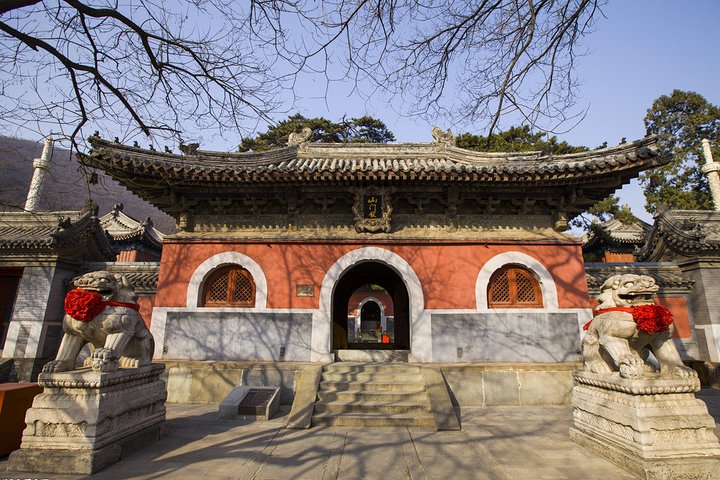
Jietai_Temple.
Tickets: Prices, Booking, and Tips
When planning your visit to Jietai Temple (戒台寺) in Beijing, you’ll find that the ticketing process is straightforward and budget-friendly. Here’s what you need to know about prices, booking options, and some handy tips for making the most of your experience.
Ticket Prices
- Entry Fee: Tickets for Jietai Temple are reasonably priced at approximately RMB 45 per person.
- Combo Tickets: If you’re looking to explore more, consider purchasing a combo ticket for RMB 85 that grants you access to both Jietai Temple and the nearby Tanzhe Temple. This is a great way to experience two beautiful temples in one trip.
Booking Information
While tickets can often be purchased at the entrance, for the best experience, especially during peak tourist seasons, it’s advisable to book in advance. Here are a few options:
- Online Booking: Various travel platforms and the official tourism website offer online booking options. This can save you time and ensure your entry, especially on weekends or holidays.
- On-site Purchase: If you prefer spontaneity, you can buy your tickets directly at the temple entrance. Just keep in mind that availability may vary, particularly during busy periods.
Tips for Your Visit
-
Timing: Jietai Temple opens daily from 8:30 AM to 5:00 PM. Arriving early in the morning or later in the afternoon may allow you to enjoy a quieter atmosphere, perfect for appreciating the temple’s serene beauty.
-
Photography: Bring your camera! The temple grounds are filled with stunning architecture and ancient trees, making it a unique photo destination. The white marble double dragon statue is a must-see!
-
Dining Options: The temple features a vegetarian restaurant. However, be aware of the dining rules, particularly regarding seating arrangements and noise levels. It may be best to plan your meals at nearby restaurants if you’re traveling with children or prefer a more relaxed dining experience.
-
Respect the Space: This temple is an active place of worship. While you’re welcome to explore, be mindful of the worshippers and maintain a respectful demeanor throughout your visit.
-
Combine Your Journey: If time allows, pair your visit to Jietai Temple with a trip to the nearby Tanzhe Temple. The combo ticket makes this convenient and cost-effective.
By keeping these details in mind, you can ensure a rewarding visit to Jietai Temple, immersing yourself in its rich history and tranquil surroundings. Enjoy your trip!
How to Get There: A Complete Transportation Guide
Reaching Jietai Temple (戒台寺) in Beijing’s Western Hills offers a delightful journey that combines urban exploration and natural beauty. This serene Buddhist temple, known for its tranquil atmosphere and impressive architecture, is accessible through several transportation options. Here’s how to make your way there seamlessly.
By Public Transportation
Subway and Bus Combination:
1. Start at a Central Subway Station:
– Begin your journey from any central location in Beijing, such as Tiananmen Square or Wangfujing. Head to the nearest subway station and take Line 1 (the light blue line) towards Pingguoyuan.
- Transfer to Line 16:
-
Get off at the Pingguoyuan station and transfer to Line 16 (the brown line). This newer line will take you closer to the temple.
-
Final Bus Ride:
- Disembark at the last stop on Line 16, which is the Wangping station. From here, you can catch Bus 331 or Bus 909. These buses take you directly to Jietai Temple.
- The bus ride takes around 15-20 minutes, and you’ll be greeted by the lush landscape of the Western Hills as you approach the temple.
By Taxi or Rideshare
If you prefer a more direct route, taxis and rideshare services like Didi are readily available throughout Beijing.
- Hailing a Taxi:
- Simply flag down a taxi or use a rideshare app. Provide the driver with the destination: “Jietai Si” (戒台寺) or show them the address.
-
The journey from central Beijing typically takes about 45 minutes to an hour, depending on traffic.
-
Cost Considerations:
- Expect to pay around RMB 100-150 for the ride, which is a convenient option if traveling with companions or family.
By Bicycle
For the more adventurous traveler, cycling to Jietai Temple is a fantastic way to enjoy the scenic routes of Beijing’s outskirts.
- Bicycle Rentals:
-
Rent a bike from one of the many bike-sharing services available in the city.
-
Scenic Route:
- Follow designated cycling paths towards the Western Hills. The ride can take around 2-3 hours, depending on your pace, but you’ll be rewarded with beautiful views along the way.
Tips for Your Journey
- Best Time to Visit: Early mornings or late afternoons are ideal for visiting Jietai Temple as you can enjoy the serenity of the surroundings and capture stunning photos without the crowds.
- Bring Cash: While larger transportation services accept digital payments, smaller bus routes may require cash.
- Dress Comfortably: Since you may encounter some walking, especially if you choose to explore the temple grounds, comfortable footwear is recommended.
With these transportation options at your disposal, visiting Jietai Temple promises to be a smooth and enriching experience, allowing you to immerse yourself in the peaceful ambiance of this spiritual haven. Enjoy your journey!
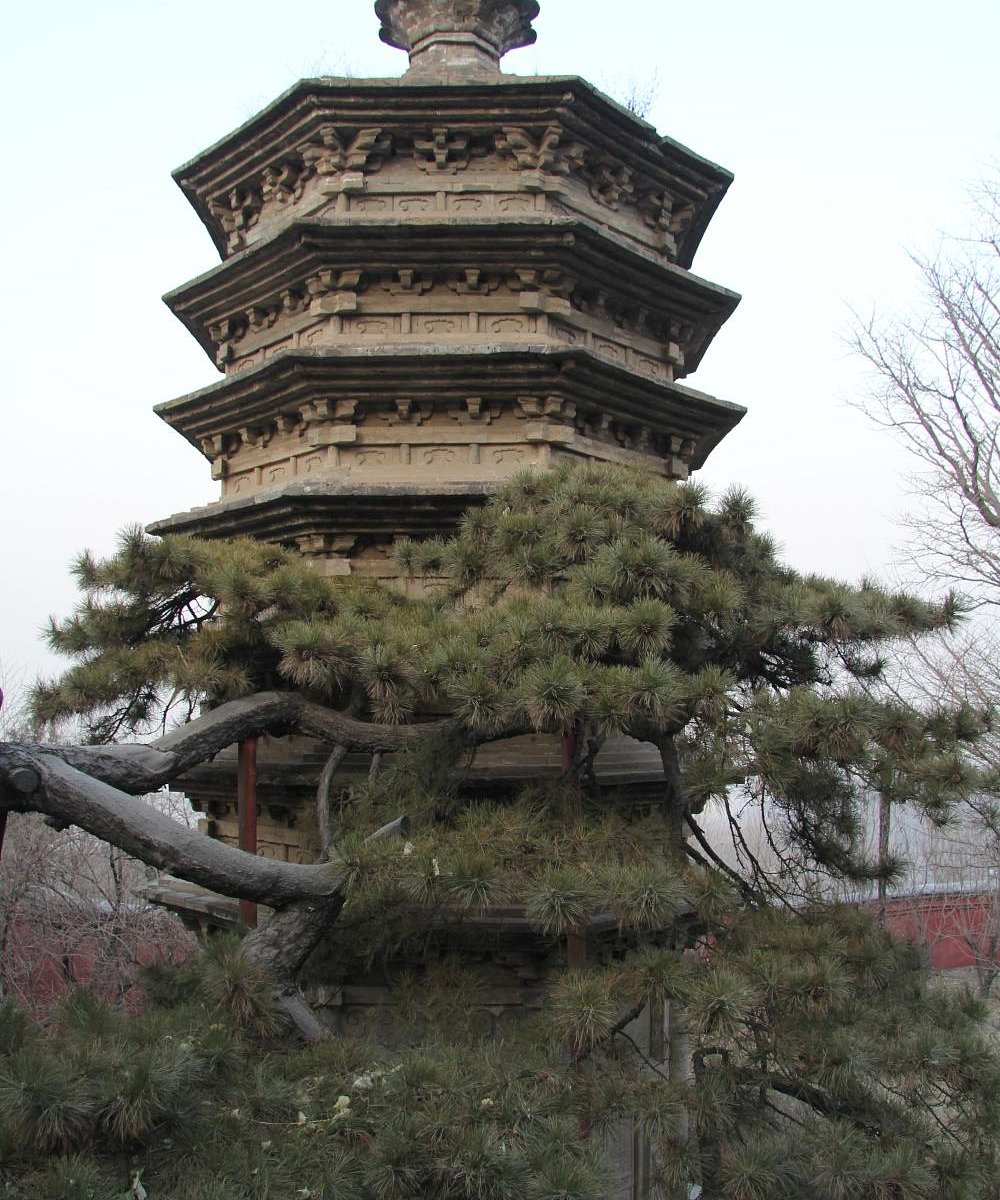
Jietai_Temple.
Local Cuisine and Accommodation Nearby
When visiting the serene Jietai Temple, nestled in Beijing’s Western Hills, you’ll want to make the most of your day by savoring local cuisine and finding comfortable accommodations in the nearby area.
Culinary Delights Near Jietai Temple
While Jietai Temple features an in-house vegetarian restaurant, its strict dining rules may not suit everyone. If you’re looking for a more relaxed dining experience, consider these nearby options:
-
Yan Chu Lao Tan Suancaiyu – Approximately 2.8 miles away, this restaurant is renowned for its pickled fish dishes. The ambiance is cozy, making it a great spot for a casual meal after your temple visit.
-
Guang Shun Yuan Hot Pot – Located about 2.3 miles from the temple, this hot pot restaurant offers a delightful experience where you can choose from a variety of fresh ingredients to cook at your table. A perfect way to warm up after exploring the temple grounds!
-
Jin Ya Fang Roast Duck – For those who want to indulge in one of Beijing’s most famous dishes, this eatery is also about 2.3 miles away and specializes in roast duck. It’s a must-try for any food lover visiting Beijing!
-
LongFeng ShanZhuang Restaurant – This establishment, roughly 2.5 miles from the temple, serves a mix of Chinese and Vietnamese cuisine. It’s perfect for diners wishing to explore flavors beyond traditional Chinese fare.
Accommodations for a Cozy Stay
After a day of exploration, rest your head at one of the nearby accommodations that cater to various budgets:
-
Beijing Shanshui Trends Hotel – A comfortable option located about 3 miles away, this hotel offers modern amenities and is well-reviewed by travelers for its friendly service and clean rooms.
-
Mentougou Baqi Cave – For a unique experience, consider staying at this hotel that provides a glimpse into the local culture while offering essential comforts. It’s a bit further but presents a charming experience in a natural setting.
-
Home Inn Beijing Mentougou – This budget-friendly choice is situated within a short drive from the temple. Known for its clean rooms and friendly staff, it’s a practical option for international travelers.
-
Fangshan Wangfotang Hua Tower – If you’re looking for something a bit different, this hotel offers a scenic view and is located near various attractions, making it a convenient base for your adventures.
Whether you’re indulging in local delicacies or relaxing in comfortable accommodations, the area surrounding Jietai Temple offers a blend of tranquility and culinary adventures that enhance your travel experience in Beijing.

Jietai_Temple.
Frequently Asked Questions
Frequently Asked Questions about Jietai Temple
1. What are the opening hours for Jietai Temple?
Jietai Temple is open daily from 8:30 AM to 5:00 PM. Plan your visit accordingly to ensure you have enough time to explore the serene surroundings and significant historical sites.
2. How much does it cost to enter Jietai Temple?
The entrance fee to Jietai Temple is approximately RMB 85, which can be combined with tickets to nearby attractions like Tanzhe Temple. It’s a good idea to check for any package deals that may offer better value.
3. Is Jietai Temple suitable for families with children?
While families are welcome, it’s important to note that the temple has specific rules, such as separating male and female visitors at the vegetarian restaurant and maintaining quietness. Parents should prepare their children for a more tranquil environment.
4. What should I wear when visiting Jietai Temple?
Visitors are encouraged to dress modestly and respectfully when visiting the temple. Comfortable shoes are a must, as you may want to explore the grounds and climb to higher viewpoints.
5. Are there any dining options available at the temple?
Yes, Jietai Temple features an in-house vegetarian restaurant. However, be mindful of the rules regarding seating arrangements and noise levels, especially if visiting with children.
6. Is it easy to find Jietai Temple?
Jietai Temple is located in the Western Hills of Beijing, which may require some travel from central areas. Consider using public transport or hiring a taxi to reach the temple easily.
7. What is the best time of year to visit Jietai Temple?
Autumn is often regarded as the best time to visit due to the colorful foliage and serene atmosphere. However, the temple is beautiful year-round, so choose a season that suits your preferences.
8. Are there any notable sights within the temple grounds?
Definitely! Be sure to check out the stunning white marble double dragon statue and the ancient trees that grow from the walls. These features contribute to the temple’s historical significance and provide excellent photo opportunities.
Final Thoughts on Your Trip
As your journey through the serene Jietai Temple comes to a close, take a moment to reflect on the tranquil beauty that surrounds you. Nestled in the lush Western Hills of Beijing, this hidden gem offers a unique glimpse into China’s rich Buddhist heritage, far removed from the bustling crowds of the city’s more famous landmarks. The ancient trees, intricate statuary, and the enchanting white marble double dragon sculpture invite you to slow down and appreciate the whispers of history that echo through the temple grounds.
Whether you’re seeking spiritual solace, a peaceful retreat, or simply a beautiful backdrop for your photography, Jietai Temple delivers an experience that resonates long after you’ve left. As the sun sets behind the hills, casting a warm glow over the temple, you’ll find yourself enriched not just by the sights, but by a sense of serenity that only such a sacred place can provide.
So, as you depart, remember to carry the tranquility of Jietai Temple with you, a serene memory to cherish amidst the hustle and bustle of your travels. Embrace the spirit of this ancient site and let it inspire your journey ahead.